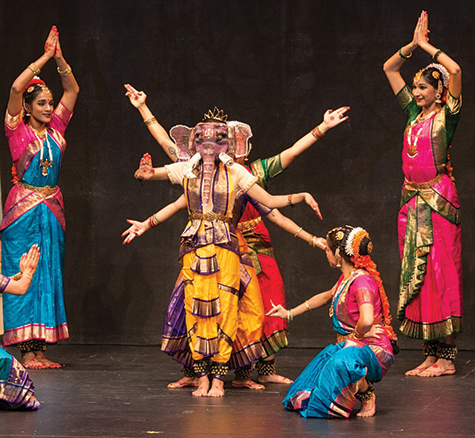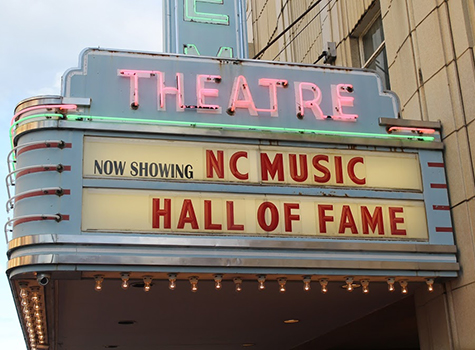
As we celebrate the 21st anniversary of “Dances of India” production on Saturday, April 6, 2024, I decided to showcase how Lord Shiva’s entire family are dancers. That sounds funny but I can relate to it. If a mom or dad is a dancer in any family across the world, children are most likely to learn some dance style. I have seen this with friends and also know 3 to 4 generations of Ballet, Russian, and Indian classical dancers. When it comes to classical Ballet, classical Ballroom dances like Waltz and of course Indian classical dances, they are very difficult to learn. We will showcase the connections between these dance styles. Thanks to the students and parents who are dedicated to these classical dance forms and are eager to teach their children about Hindu religion and the stories from the scriptures.
In this era of “Instant Gratification,” where people just want to see their children on the stage quickly, it is very humbling to see many parents following the path of cultural education, and a long-term commitment to these classical dances.
It is so wonderful to see hundreds of people still showing up to see our shows filled with classical dances, dance dramas, folk traditions, international dances connected to India and cherishing these unblemished arts.
This year we will highlight different aspects and dances of Lord Shiva, Goddess Parvathi, and Lord Ganesh’s Thandava dances.
The most popular, mystic, and beautiful Lord is Shiva, also known as Mahadeva. We will depict stories of Lord Shiva protecting his devotees called Shiva Leelas. He is one of the most dynamic representations in Hinduism.
The most famous of Lord Shiva’s family dances are the Thandava dances. These dances are used to direct mortals on the path of renunciation of the ego to gain true knowledge and salvation. As you may know, according to Hindu religion, the Supreme Lord of the dance is Shiva, third of the Hindu trinity. Shiva represents that aspect of God who creates good (true knowledge) and destroys evil (ignorance). He is the source of cosmic harmony and rhythm.
There are three aspects of Lord Shiva’s Thandava dances, namely: The Destructive, The Yogic and The Gift giving. In the first aspect of Thandava, He dances on the burning grounds, with ten arms, denoting great power, celestial and miraculous.
Shiva dances as the destroyer of illusion. The burning grounds symbolize the hearts of humans, cleansed by the fire of knowledge to destroy ignorance. This dance is very invigorating and powerful. It requires tremendous agility and great stamina as it is choreographed with difficult Karanas or poses demanding flexibility and strength of the dancers.
The second aspect of Shiva’s dance is the Yogic-evening dance performed on Mount Kailash. It is known as Sandhya Thandavam. This dance reflects the calm and beauty of a gorgeous sunset in the mountains. As we experience this yogic evening dance, it allows us to surrender the worldly ambitions, sorrow, ego, fear, and pride. The music is usually very relaxing and very rhythmic in nature.
The third aspect of dance is the Gift giving. Lord Nataraja represents the third aspect. This is the mystic dance of Lord Shiva, danced before the golden assembly in the Golden Hall of Chidambaram or Thillai in Chennai, South India. The very meaning of the Chidambaram is crucial to understand its significance. Chit means the heart or consciousness. Ambaram means universe, the heavens, or hall. At age five, this is where my dream to become a classical dancer began.
There is a famous dance called Natanam Adinar in Bharatha Natyam style that describes the Ananda (Happy) dance of Lord Nataraja in this Golden temple. Some of the 108 Karanas or poses as shown in the temple are often used to choreograph this powerful dance.
Learning the Karana movements is part of every dance student’s syllabus. Dr. Padma Subrahmanyam has made a tremendous contribution to the dance world by studying all the sources describing the Karanas and reconstructing and documenting them.
Lasya Thandavam is the dance performed by Shiva’s wife Parvathi in response to Shiva’s Thandava in which the movements are gentle and graceful. Many devotees and Gods assembled on Mount Kailash to witness this cosmic dance. This dance represents the love of Lord Shiva for his wife Parvathi. His smiling face, reflecting love, and compassion represent his dual personality of God and Goddess, who is the gentle gracious entity with powerful nobleness.
Such dance dramas truly immerse audiences and take them back in time. I just wanted to share these mystic stories with my ardent readers.
If you are planning to visit India this summer, try to visit some of these thousands of years old temples. These amazing archeological sites may become spiritual sites for all dancers.
My sincere thanks to all of you and hope to see you all on April 6, 2024 in Charlotte.
For questions or comments, contact Dr. Maha Gingrich via email at gingrichmaha@gmail.com.



